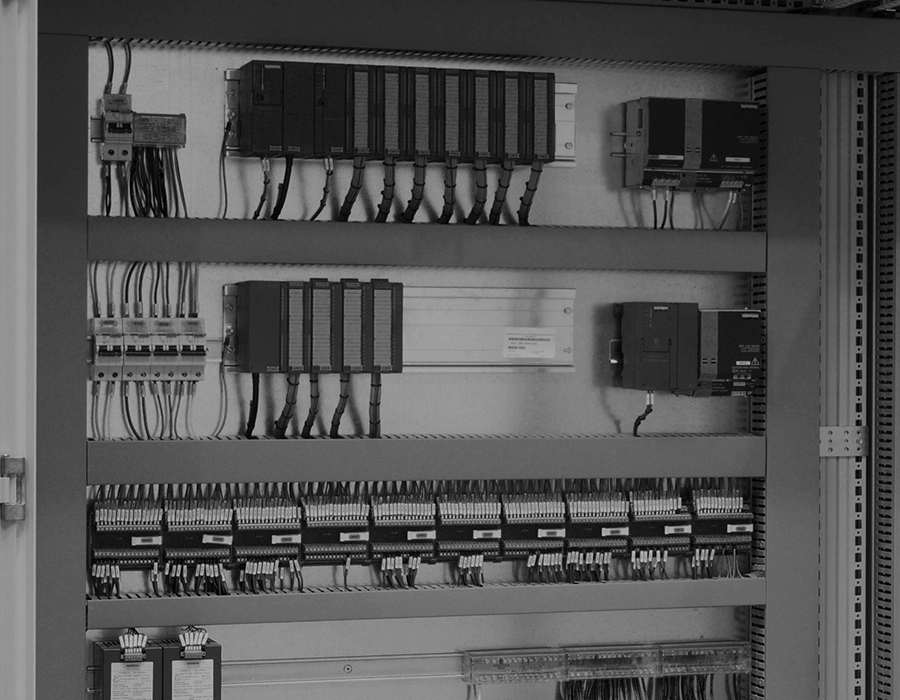5 Min Read
Protecting Shipboard OT Systems
Written by Mission Secure

Modern shipping vessels are more than just carriers of goods—they're complex ecosystems of interconnected technology. However, as vessels become increasingly digitized and interconnected, they also become more vulnerable to cyber threats. Shipboard operational technology (OT) systems, which control critical functions such as navigation, propulsion, and cargo operations, are prime targets for cyber attacks.
In this post, we’ll take a look at what makes vessels vulnerable to cyber attacks, the threats to specific shipboard systems, and how Mission Secure is helping maritime owners and operators protect their assets in a rapidly evolving environment.
Vulnerabilities in Shipboard OT Systems
the integration of advanced operational technology (OT) systems on ships has revolutionized vessel operations, enhancing efficiency and safety. However, this increased connectivity also exposes shipboard OT systems to a range of cyber threats.
Remote Access Vulnerabilities: Many shipboard OT systems now feature remote access capabilities, allowing for remote monitoring and control. However, this convenience also introduces vulnerabilities, as unauthorized access to these systems can lead to tampering, sabotage, or data theft.
Outdated Software and Firmware: Like any technology, shipboard OT systems rely on software and firmware to function. However, outdated or unpatched software can contain known vulnerabilities that hackers can exploit. With limited connectivity at sea, updating software and firmware poses unique challenges for maritime cybersecurity.
Unknown Conditions in Port: When ships are docked in port, they are particularly susceptible to cyber attacks due to the increased interaction with other vessels and the necessity of connecting to onshore networks. The proximity of multiple ships in a port creates a dense environment where cyber threats can easily propagate from one vessel to another through wireless networks or physical connections. Additionally, ships often need to connect to port infrastructure and onshore systems for cargo handling, refueling, and communication, which can expose them to compromised or insecure networks. These connections can serve as entry points for threat actors to access shipboard systems, potentially leading to data breaches, disruption of operations, and manipulation of critical OT systems. The convergence of various entities and networks in a port setting amplifies the cybersecurity risks, necessitating robust security measures to safeguard shipboard systems from potential cyber threats.
Supply Chain Risks: Maritime supply chains are vast and complex, involving numerous vendors and service providers. Each component introduced into a shipboard OT system presents a potential security risk, as compromised components can serve as entry points for cyber attacks.
Insider Threats: While external cyber threats often dominate headlines, insider threats pose a significant risk to maritime cybersecurity. Whether through malicious intent or inadvertent actions, insiders with access to shipboard OT systems can compromise vessel operations and endanger crew safety.
Lack of Security Awareness: Crew members play a crucial role in maintaining maritime cybersecurity. However, crew members often lack awareness of cyber threats or best practices for mitigating them. Without proper training and education, crew members may inadvertently engage in risky behaviors that compromise shipboard OT systems.

Where can problems happen?
Oceangoing vessels consist of dozens of distinct systems, each of which is vital to the operation of the ship. Understanding the specific cybersecurity risks associated with each onboard OT system is essential for developing effective strategies to protect these vital assets. Some of the most important systems—and most attractive targets, from an attacker's point of view—are listed below.
Power Generation/Distribution Systems
Power generation systems produce electrical energy, while distribution systems distribute power throughout the vessel to various onboard systems and equipment.
Cyber attacks targeting power generation and distribution systems can result in power outages, affecting critical vessel operations and potentially endangering the safety of the crew. Hackers may attempt to disrupt or manipulate power generation processes, leading to equipment damage or system failures.
Cargo Handling Systems
Cargo handling systems manage the loading, unloading, and storage of cargo onboard the vessel. These systems include cranes, conveyors, and storage facilities.
Cyber attacks on cargo handling systems can disrupt the loading and unloading processes, leading to delays, financial losses, and potential damage to cargo. Hackers may target these systems to interfere with cargo operations or manipulate inventory data, leading to theft or tampering of goods.
Navigation Systems
Navigation systems provide essential information for safe and efficient navigation of the vessel, including GPS, radar, gyrocompass, and electronic chart displays.
Cyber attacks targeting navigation systems can compromise the vessel's ability to navigate safely, leading to collisions, groundings, or other maritime incidents. Hackers may manipulate GPS signals, falsify navigation data, or disrupt radar and communication systems, posing serious risks to vessel safety and security.
Propulsion Systems
Propulsion systems are responsible for powering the vessel and controlling its speed and direction of movement. These systems include engines, propellers, thrusters, and related controls.
Cyber attacks on propulsion systems can impair the vessel's ability to maneuver and navigate, potentially leading to accidents or incidents at sea. Hackers may attempt to disrupt engine controls, manipulate propulsion settings, or remotely disable propulsion systems, jeopardizing the vessel's safety and seaworthiness.
Communication Systems
Communication systems enable onboard and external communication, including voice, data, and satellite communications.
Cyber attacks targeting communication systems can disrupt vital communication links between the vessel and shore-based facilities, emergency responders, or other vessels. Hackers may intercept or manipulate communications, leading to misinformation, coordination failures, or compromised situational awareness.
Control and Automation Systems
Control and automation systems automate and manage various onboard processes and equipment, including HVAC (Heating, Ventilation, and Air Conditioning), fire suppression, and environmental controls.
Cyber attacks on control and automation systems can disrupt essential vessel operations, compromise safety systems, and endanger the crew. Hackers may tamper with control settings, trigger false alarms, or disable safety features, leading to equipment malfunctions, environmental hazards, or onboard emergencies.
Safety and Security Systems
Safety and security systems protect the vessel, crew, and cargo from physical and cyber threats, including fire detection, surveillance cameras, access control, and intrusion detection.
Cyber attacks targeting safety and security systems can compromise the vessel's ability to detect and respond to onboard emergencies, security breaches, or external threats. Hackers may disable or manipulate safety alarms, sabotage surveillance systems, or breach access controls, posing risks to crew safety and vessel security.
Mitigating Cyber Risks in Maritime Operations
As an industry leader in maritime cybersecurity, Mission Secure has deep expertise in identifying and mitigating risks to cargo ships, LNG carriers, military vessels, and other critical maritime assets. Here's a quick look at the key steps in assessing and addressing maritime OT cyber risk.
Asset Inventory
The first step in implementing OT cyber protection, on a ship or in any other environment, is to build a complete list of the control systems, workstations, and other assets that have been installed. Ship owners and operators often have little to no ability to maintain an asset inventory without an OT-specific cybersecurity platform like Mission Secure. Learn more about our OT asset inventory capabilities here.
Vulnerability Analysis
Which shipboard assets are affected by known cybersecurity vulnerabilities? Which vulnerabilities are known to be actively exploited by threat actors? How severely would an attack impact ship operations? These are the questions that need to be answered before owners and operators can implement an effective risk reduction strategy. Mission Secure streamlines the process by automatically identifying and evaluating the cyber vulnerabilities that affect a ship's OT systems.
Network Monitoring
Mission Secure employs advanced network monitoring and threat detection technology to oversee shipboard OT network traffic, ensuring the detection of unexpected or unauthorized activities. By continuously analyzing data flows and interactions within the OT environment, the platform can identify anomalies and potential security breaches in real-time. When anomalous activity is detected, Mission Secure generates immediate alerts, allowing for rapid response to mitigate risks. This proactive approach enhances the security of critical shipboard systems, helping to prevent disruptions, unauthorized access, and potential cyber threats from compromising vessel operations.
Network Segmentation and Policy Enforcement
Mission Secure further enhances shipboard cybersecurity through robust network segmentation and OT policy enforcement. By dividing the OT network into secure, isolated segments, Mission Secure limits the spread of potential cyber threats and ensures that critical systems are protected from unauthorized access. Additionally, the platform enables tailored OT policies to govern system interactions and user behaviors, maintaining operational integrity and security. These measures safeguard shipboard operations against cyber risks, ensuring resilient and secure maritime operations.
Take Action Today
In the ever-evolving landscape of maritime cybersecurity, vigilance and preparedness are key. Implementing robust cybersecurity measures and adopting a proactive approach to risk management are critical for safeguarding maritime assets and protecting against cyber threats at sea. To find out how Mission Secure can help your organization protect its maritime assets, fill out the contact form below, or schedule a consultation today.
Originally published May 29, 2024, updated May 29, 2024.


